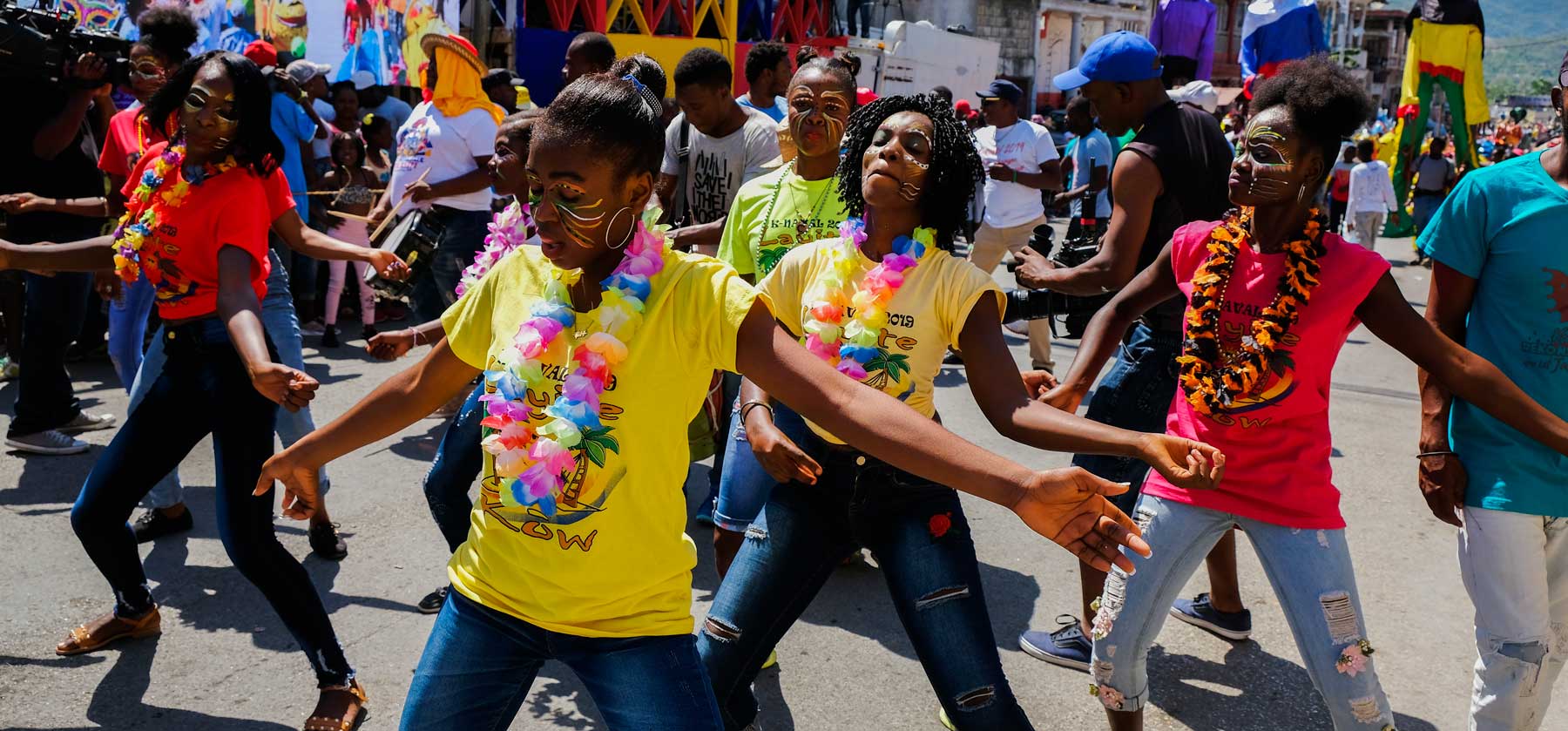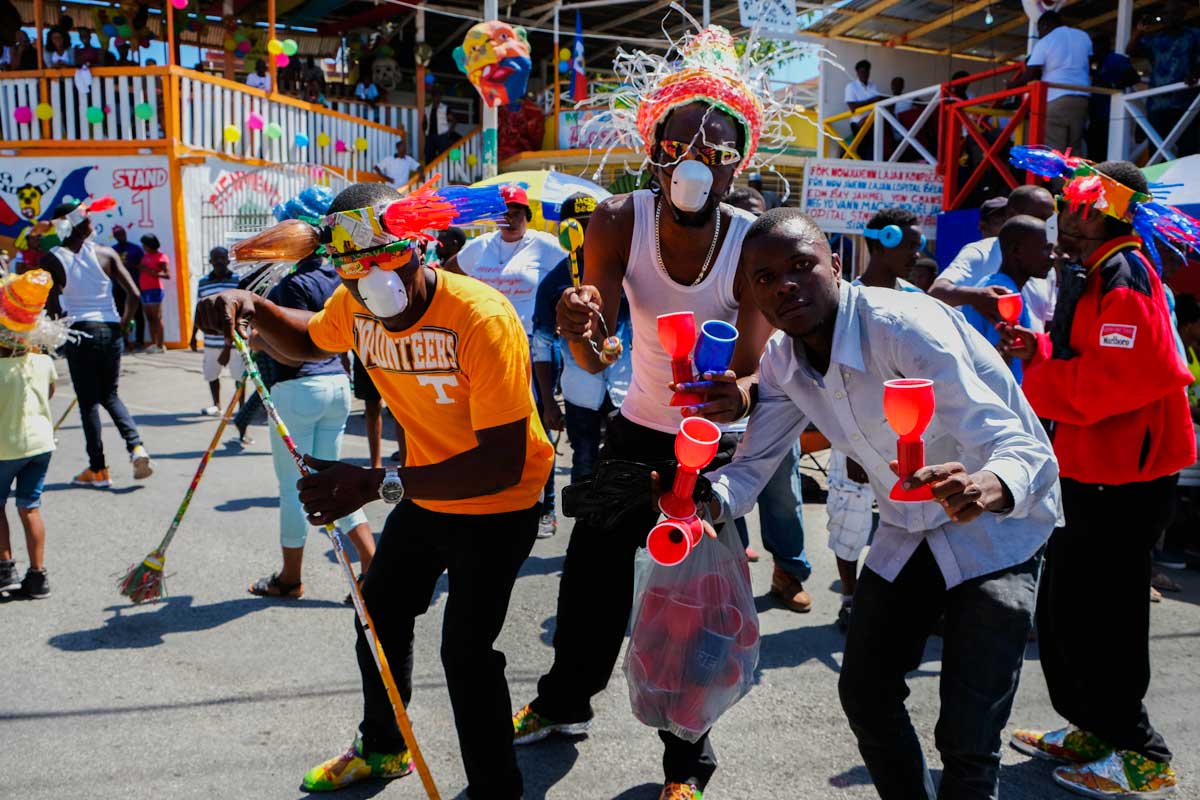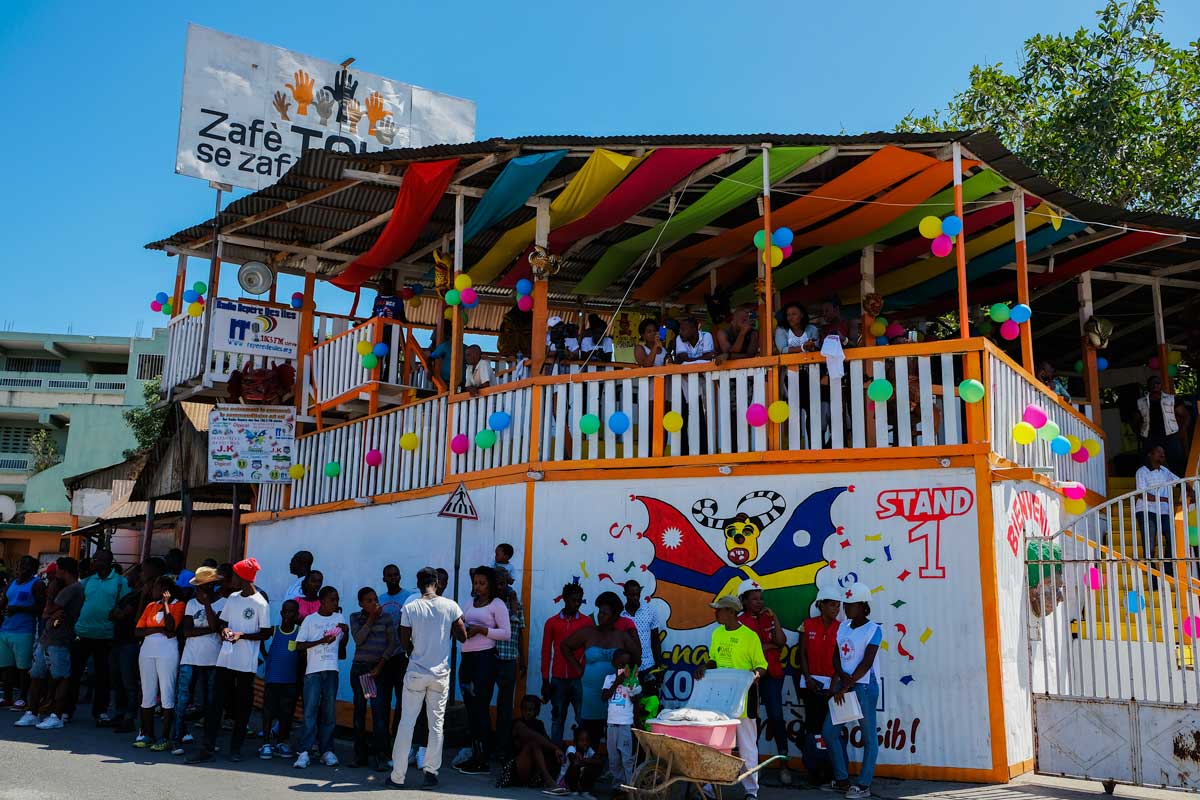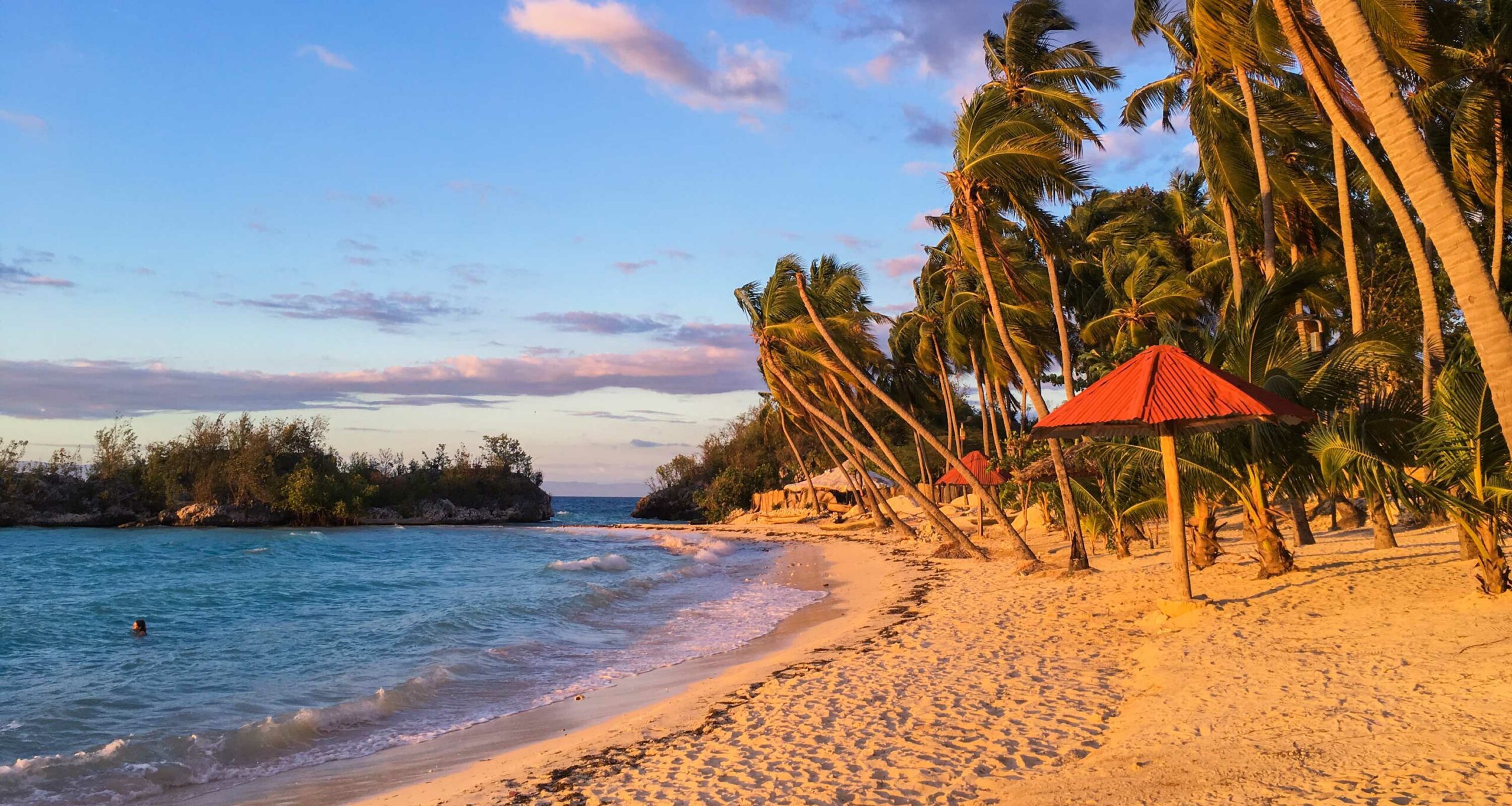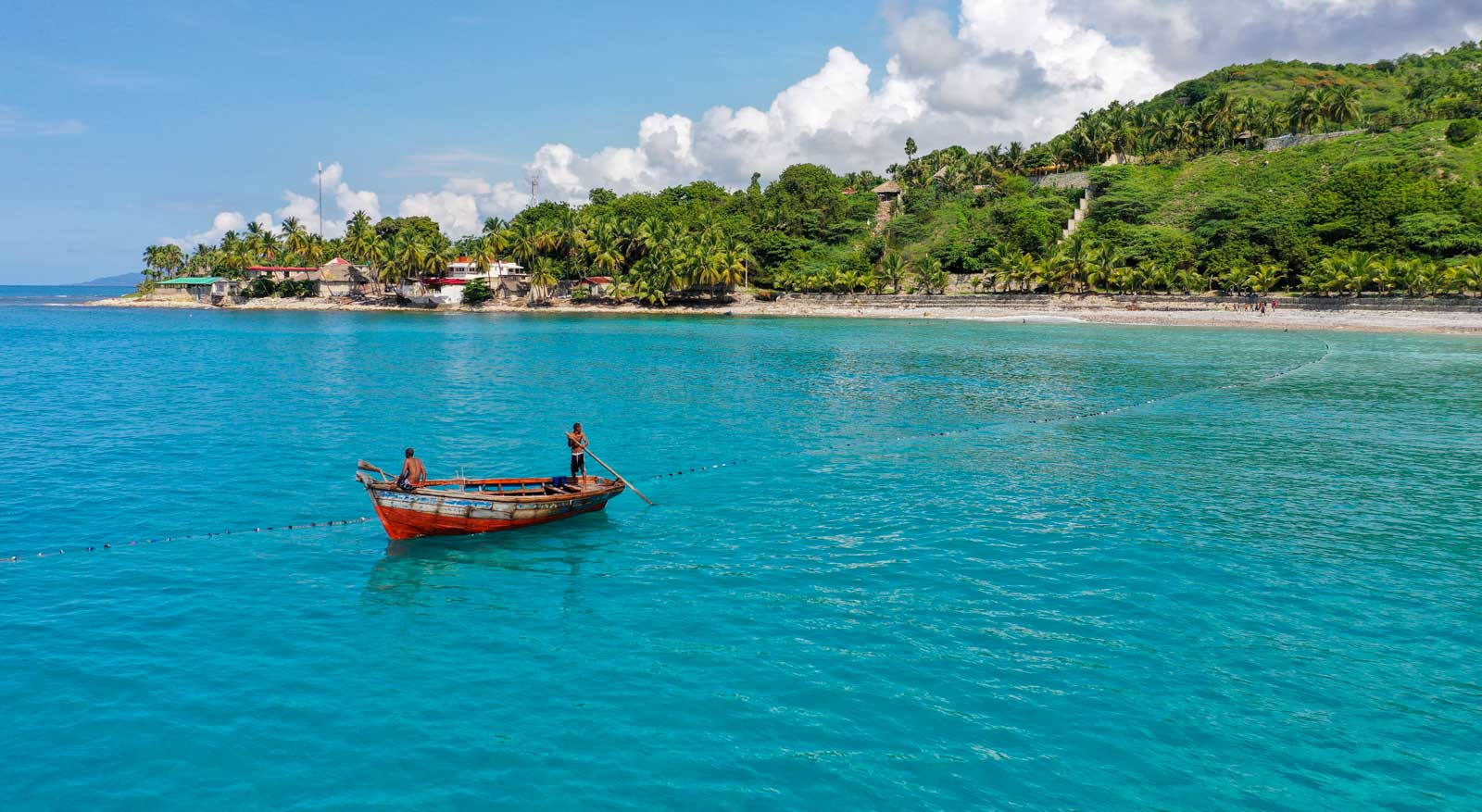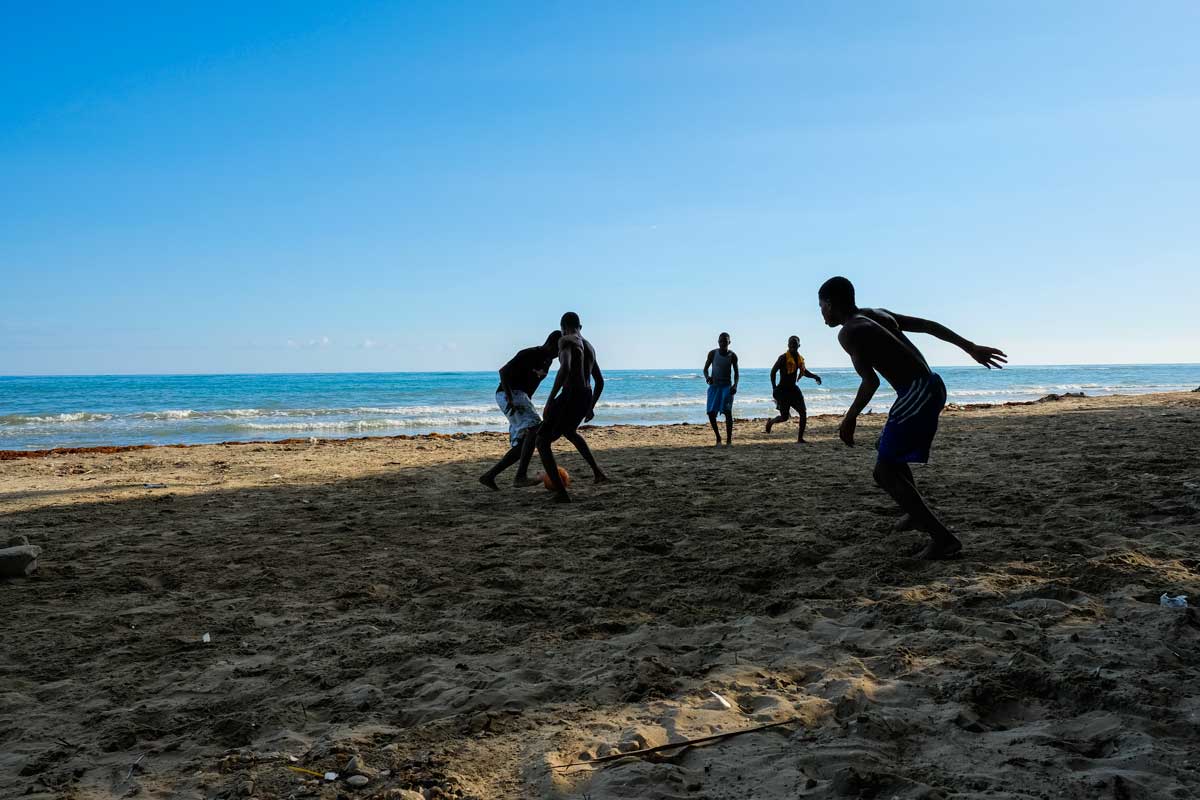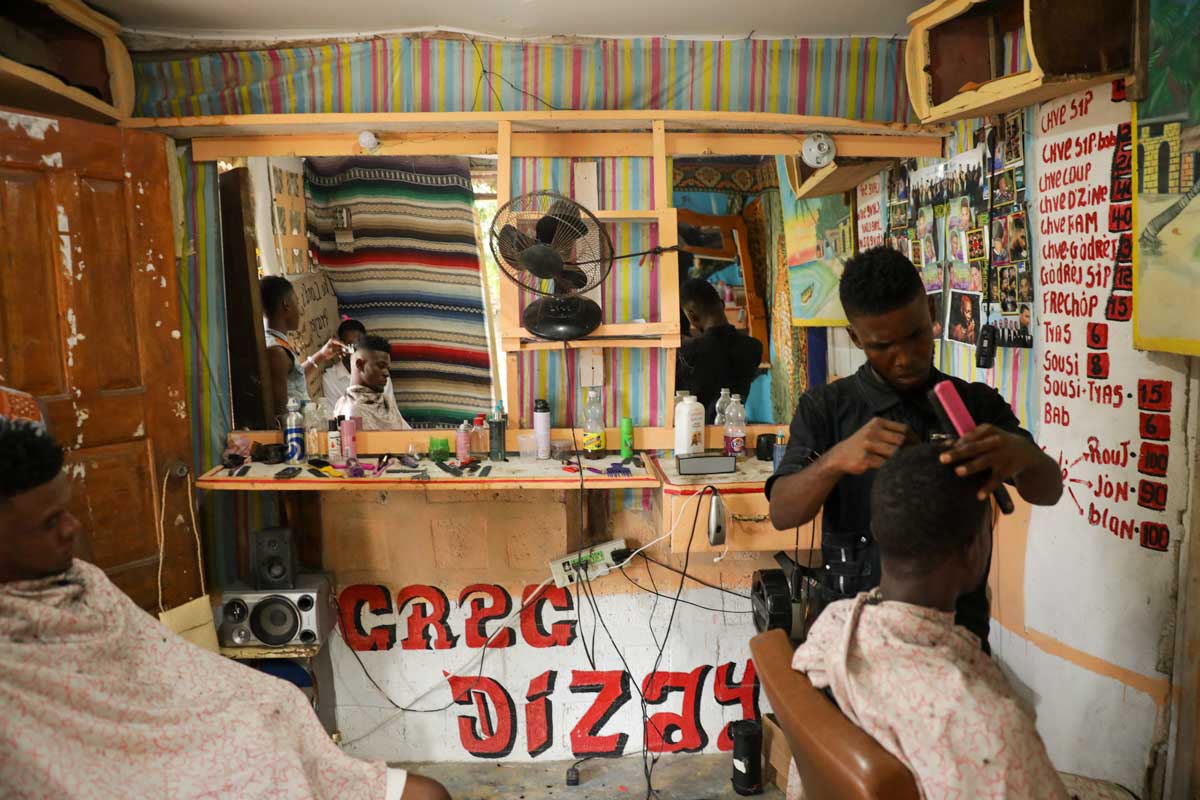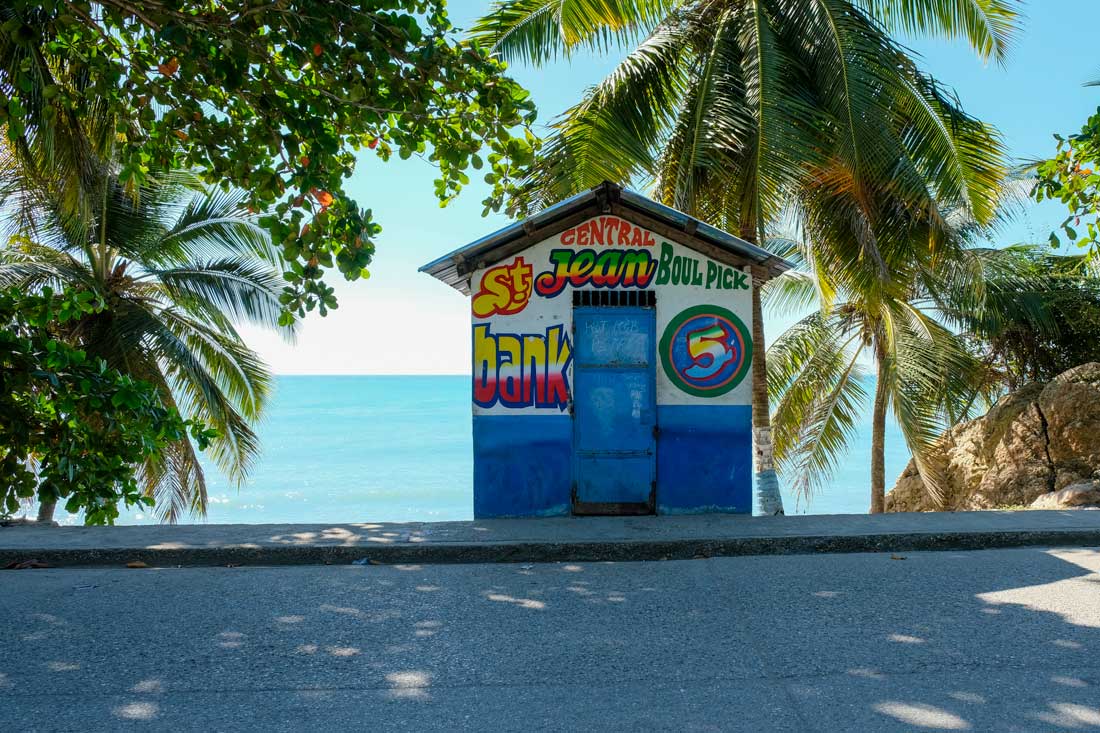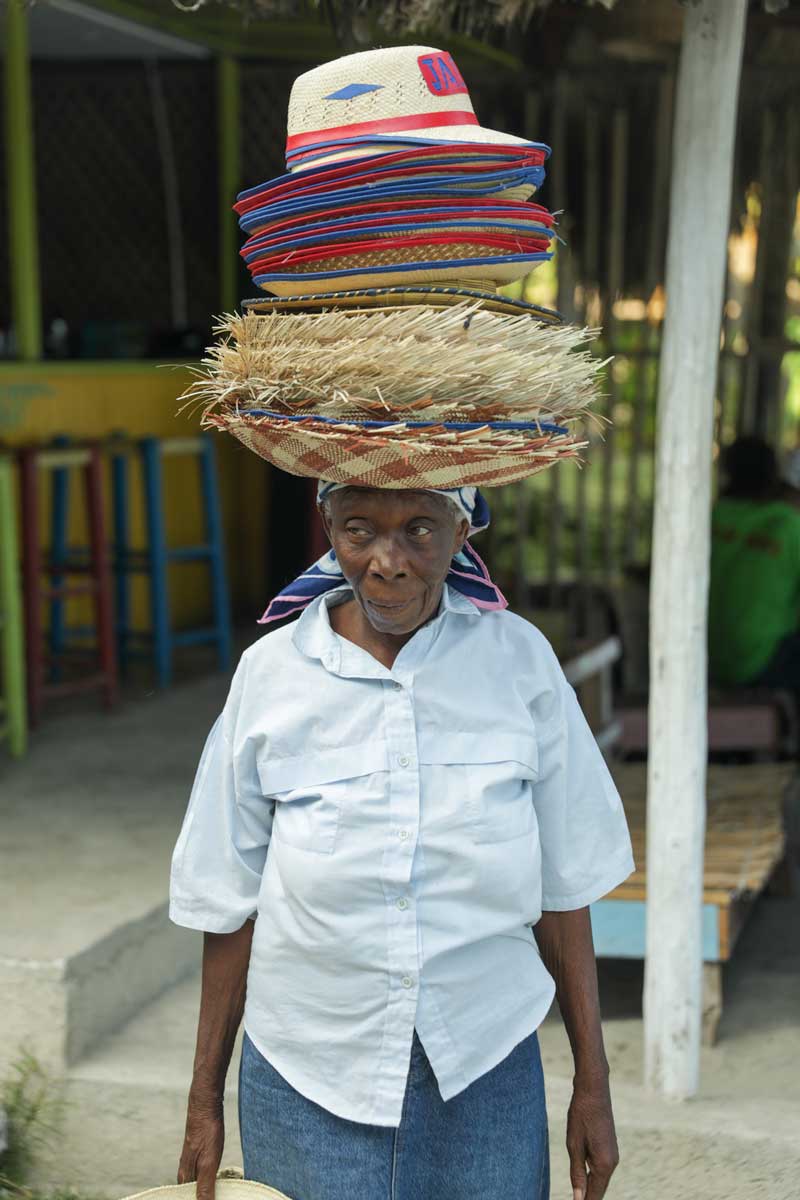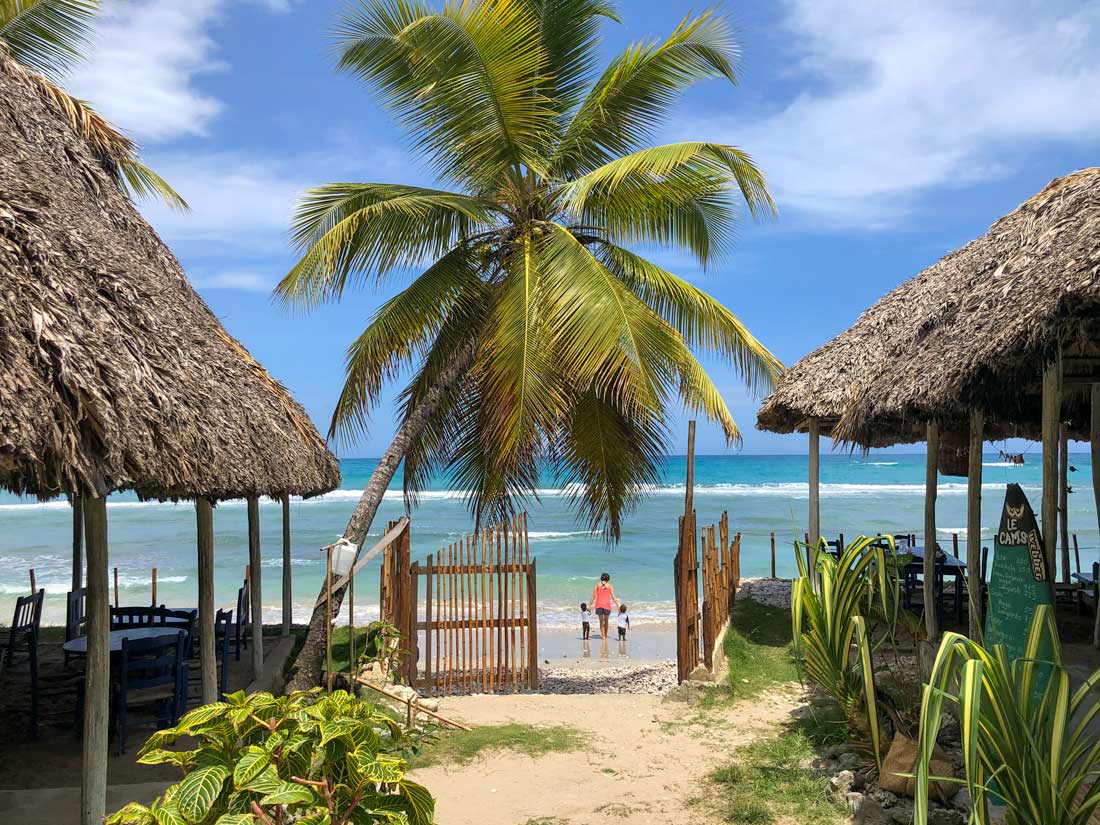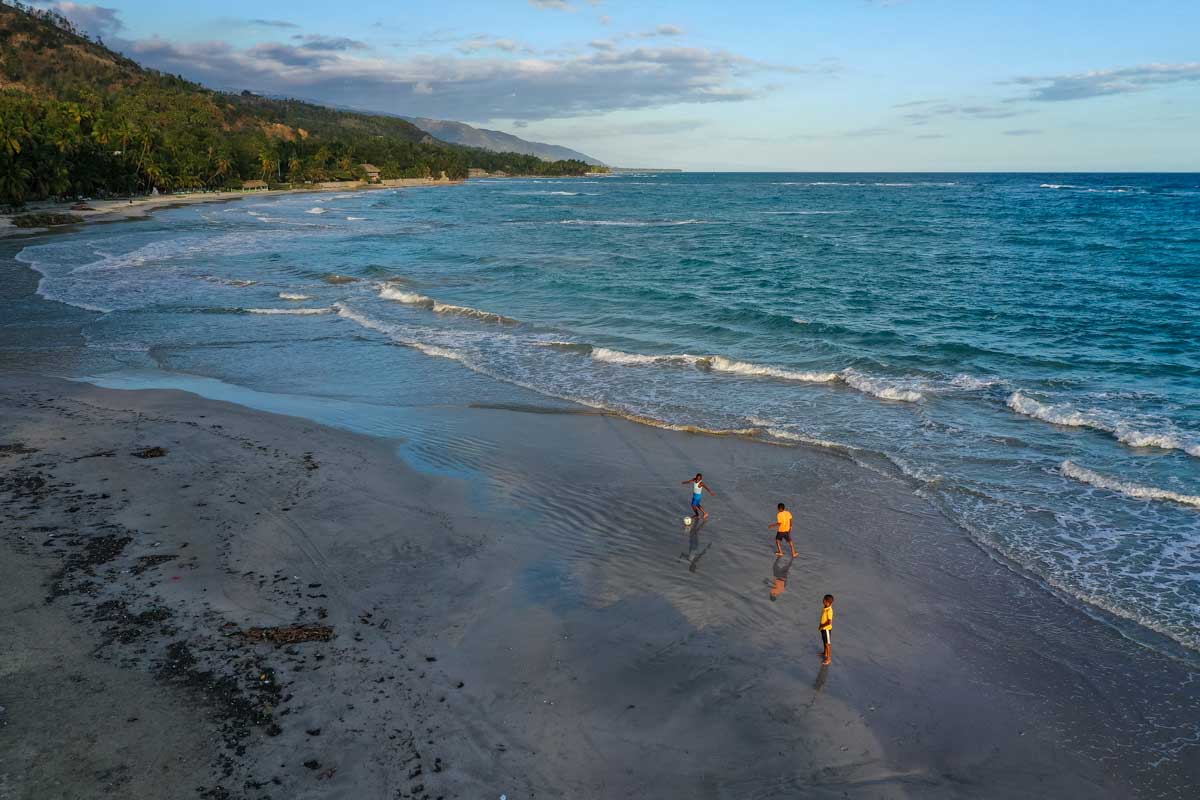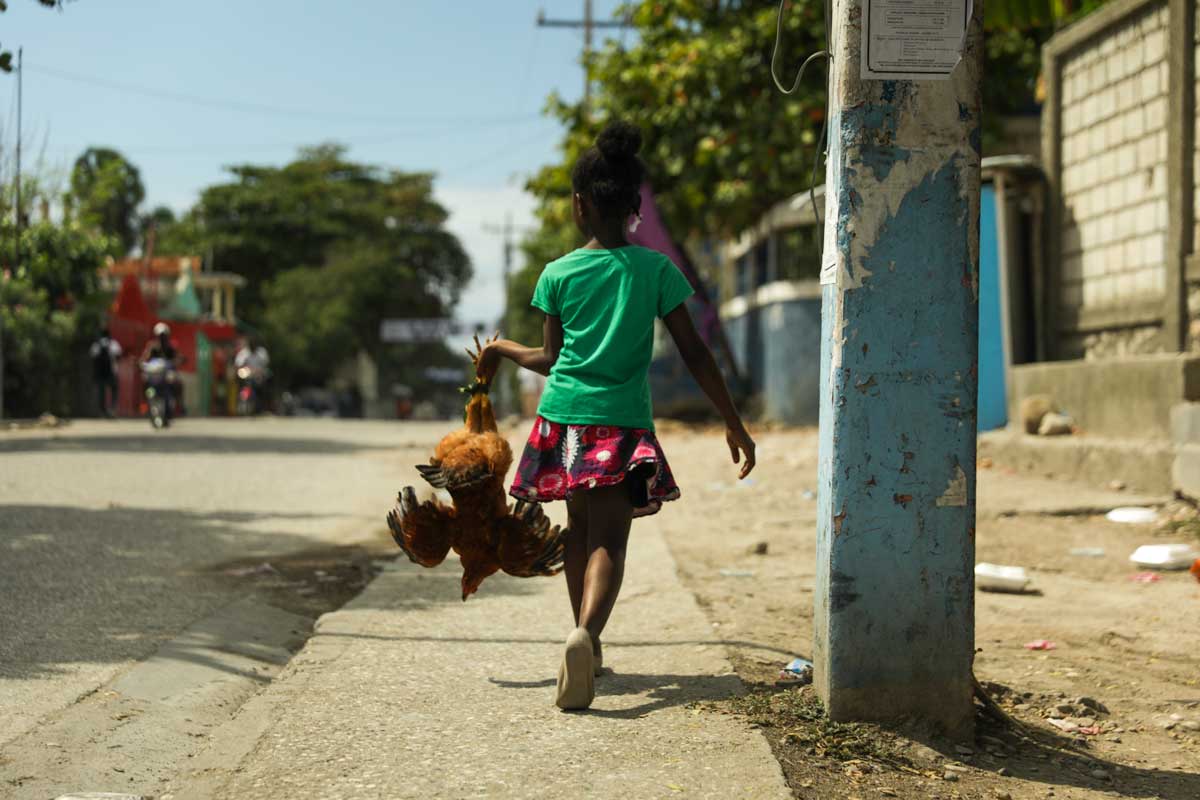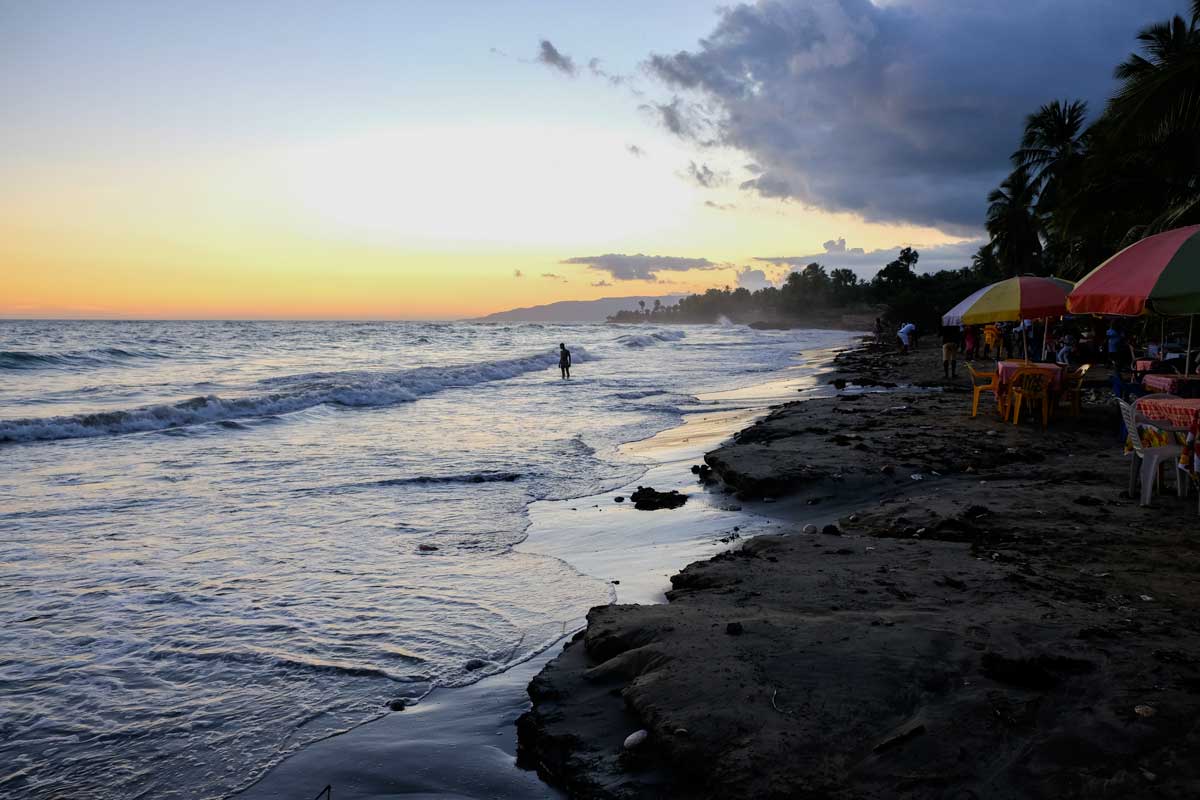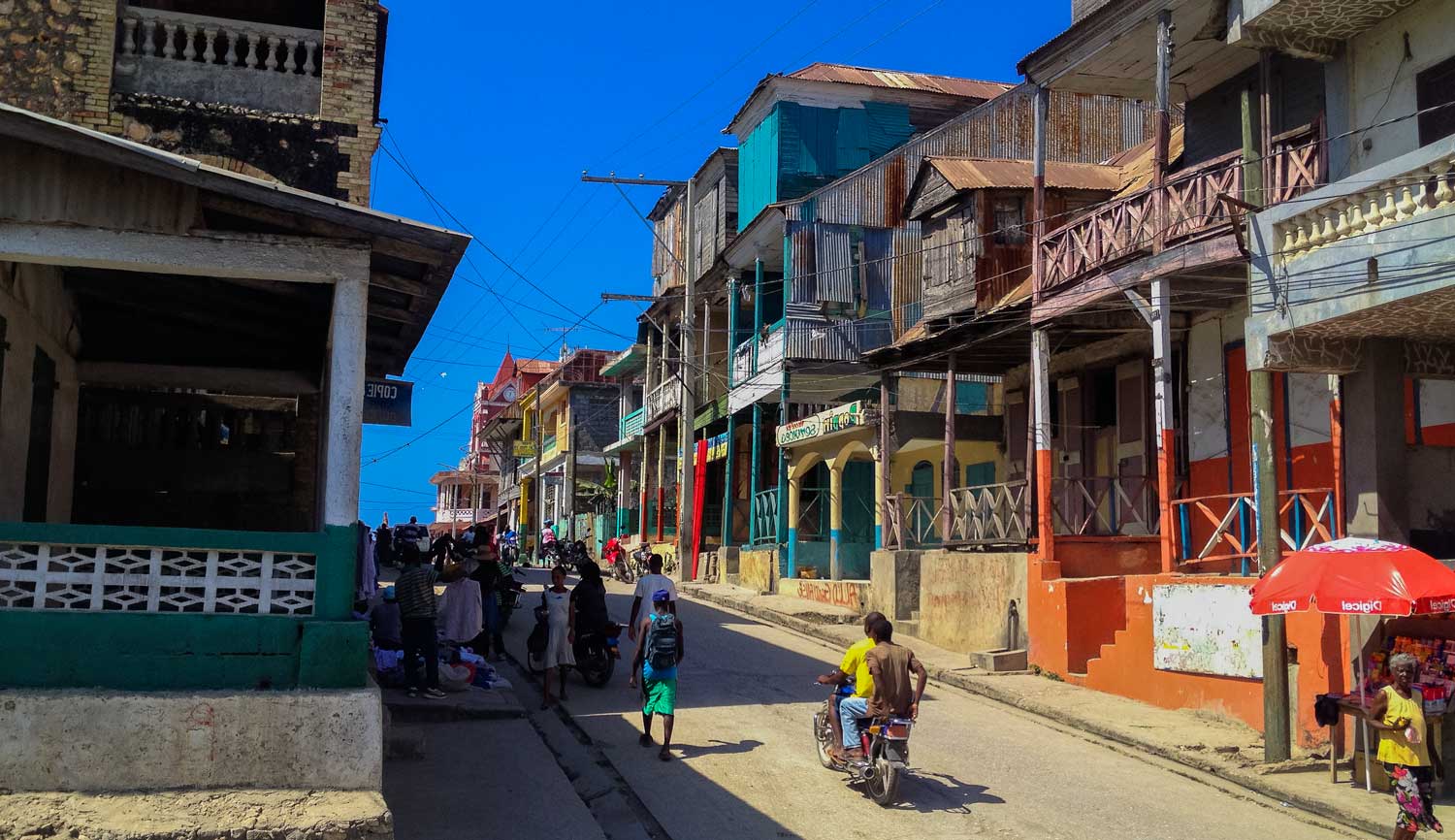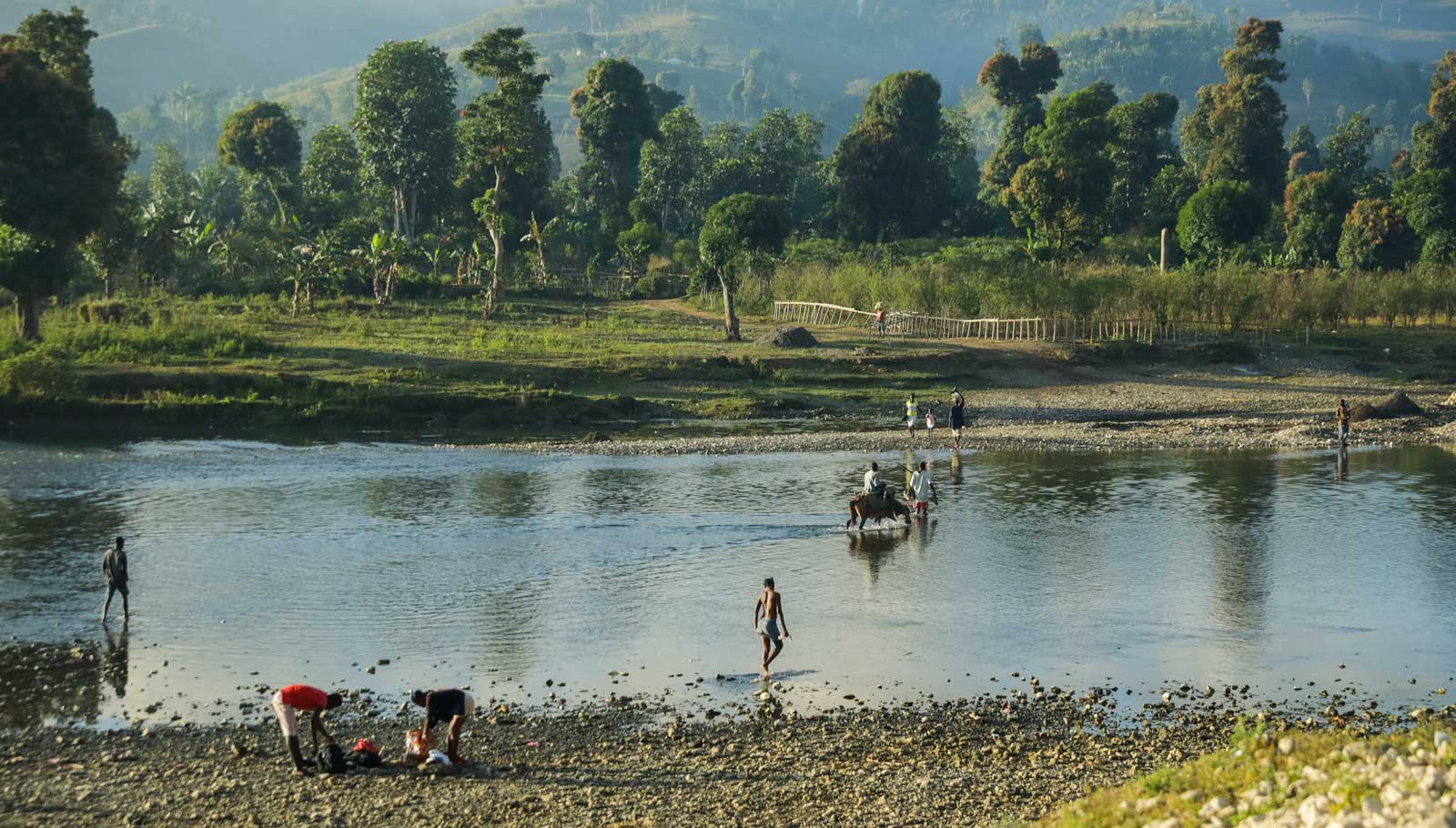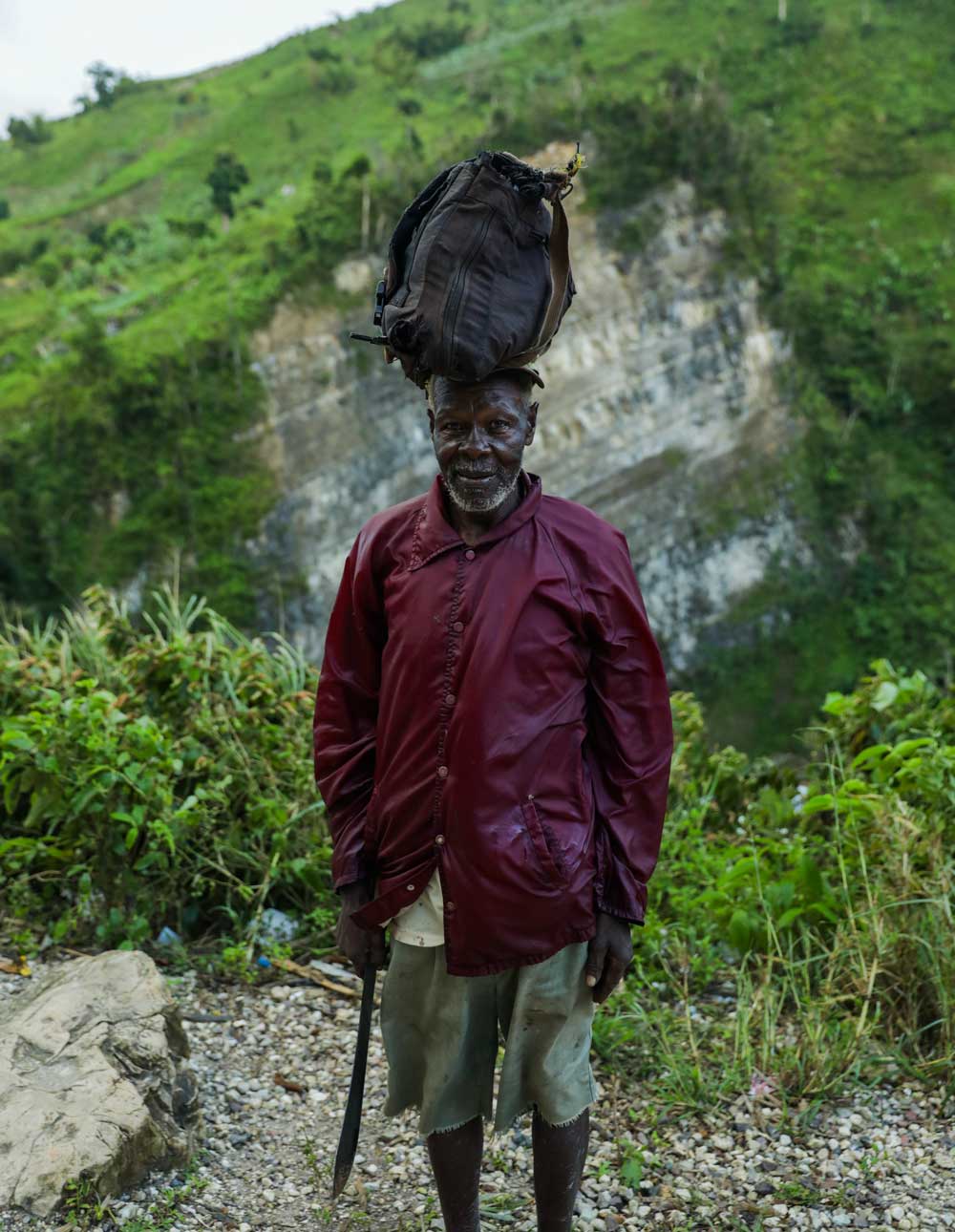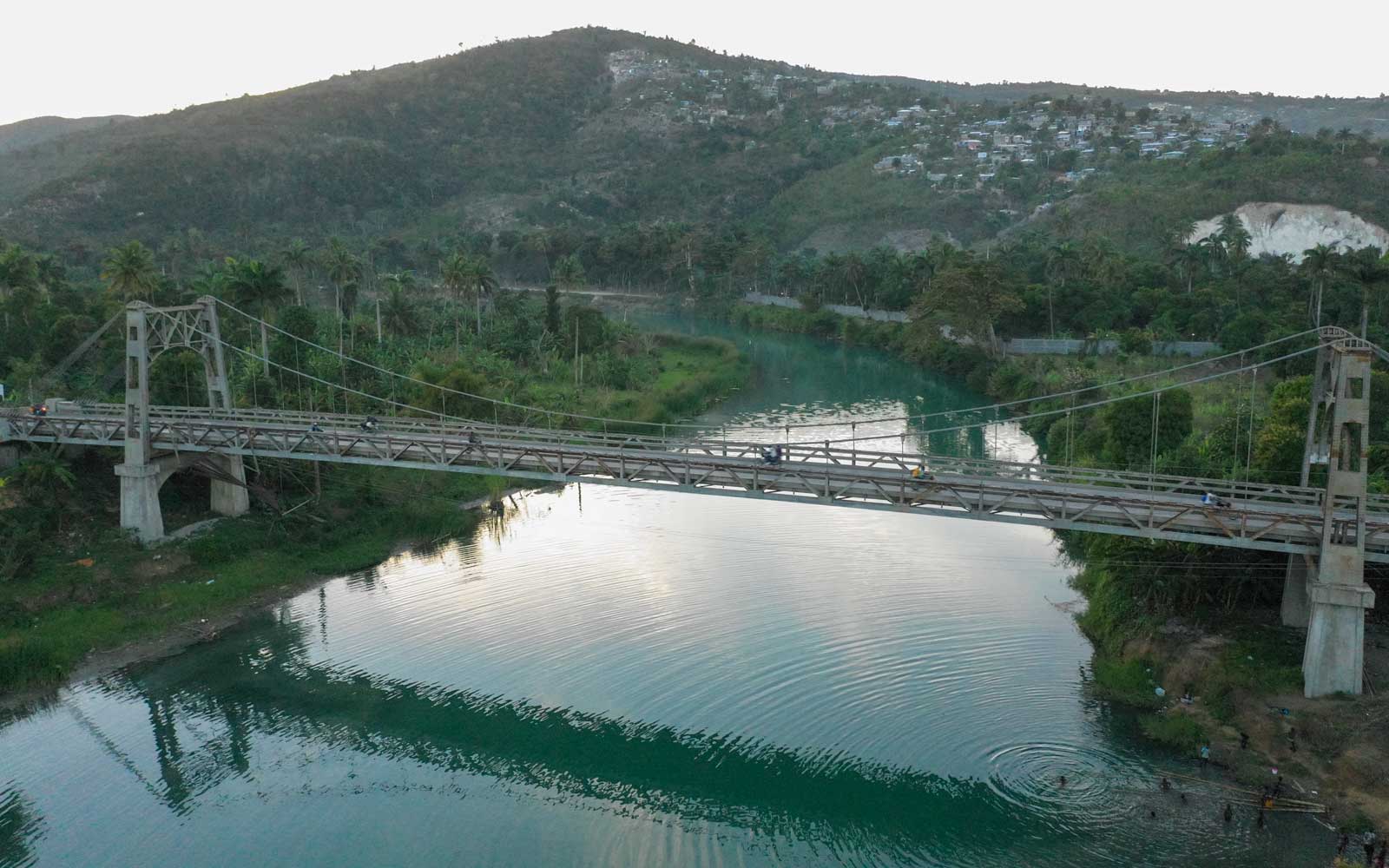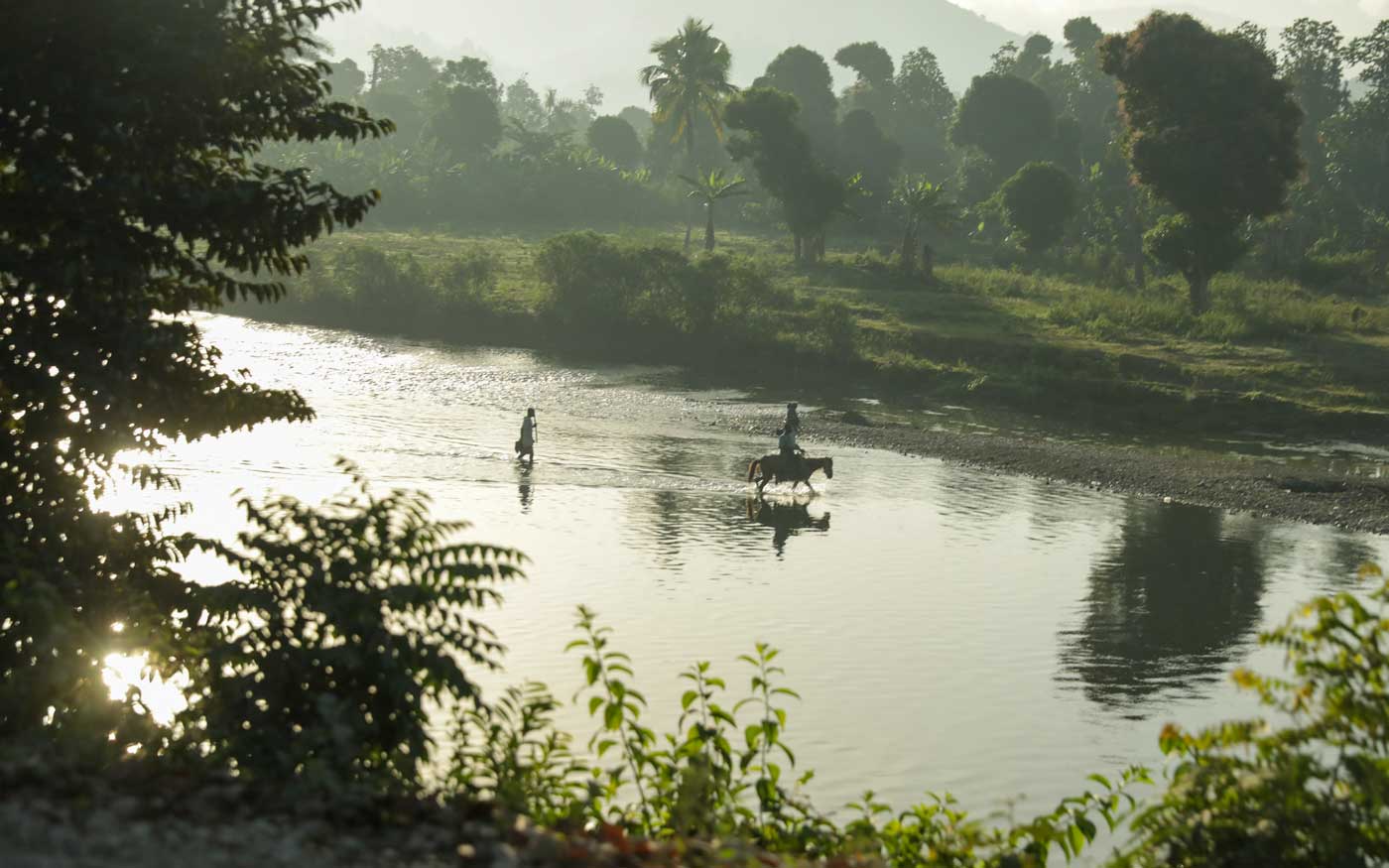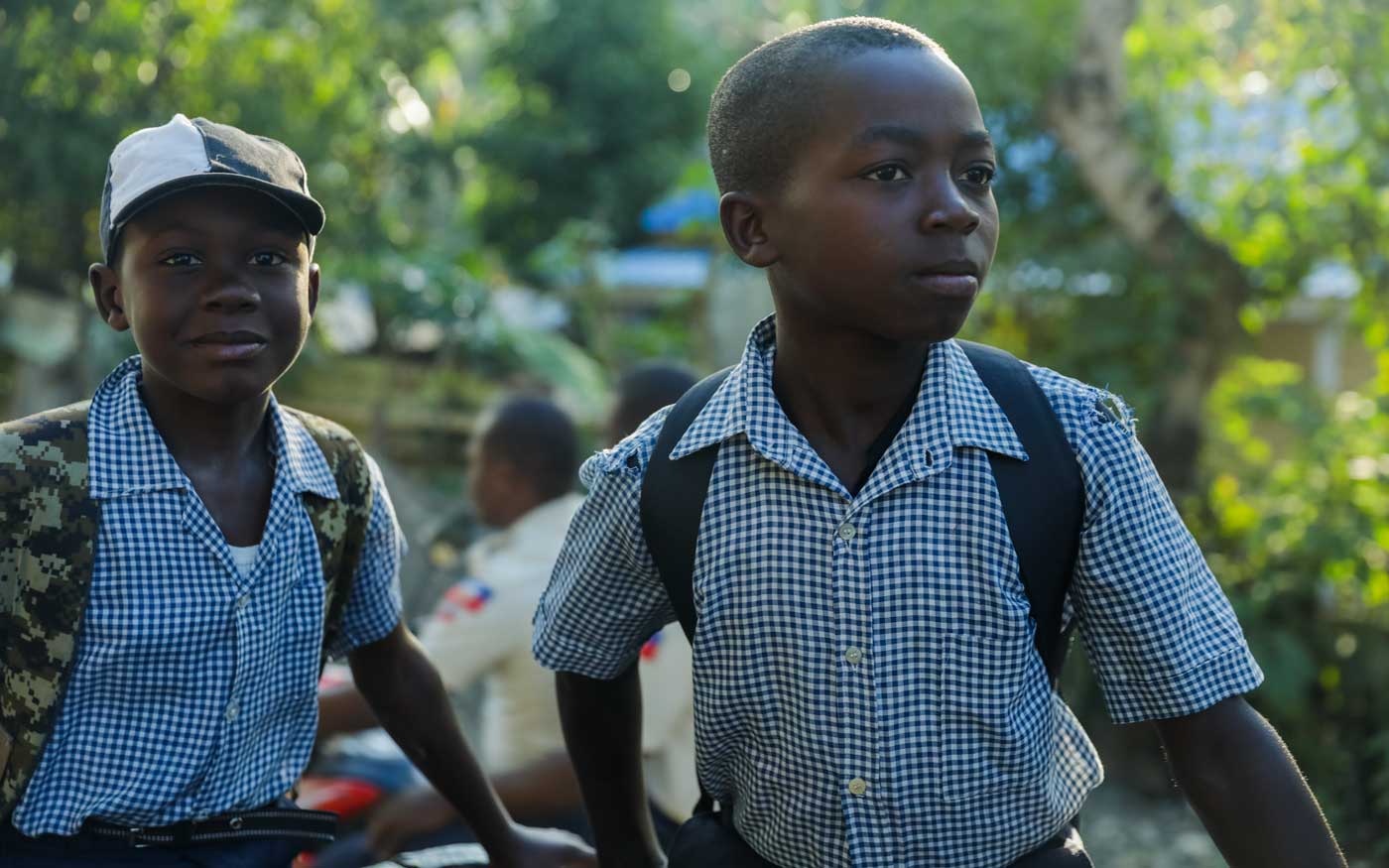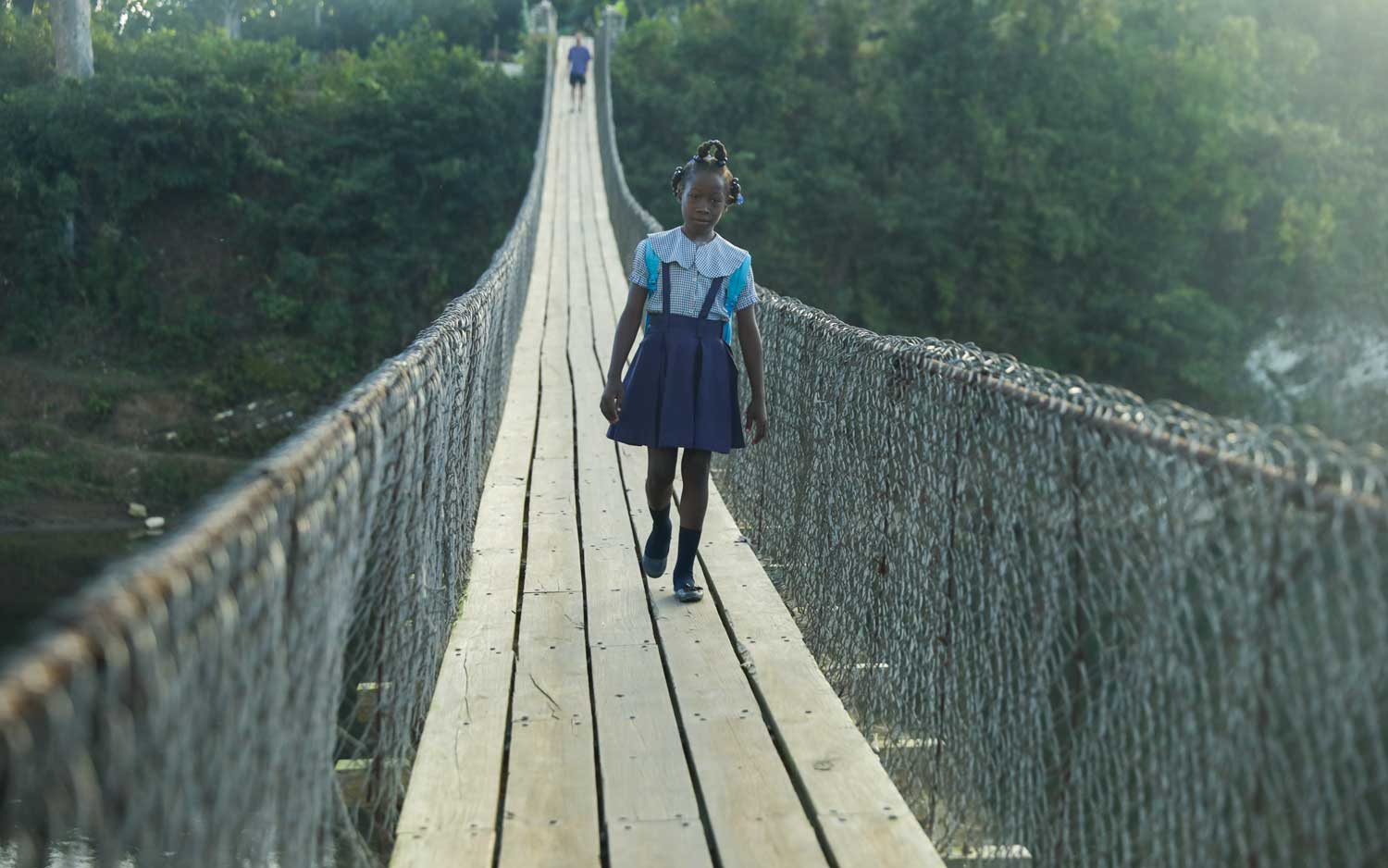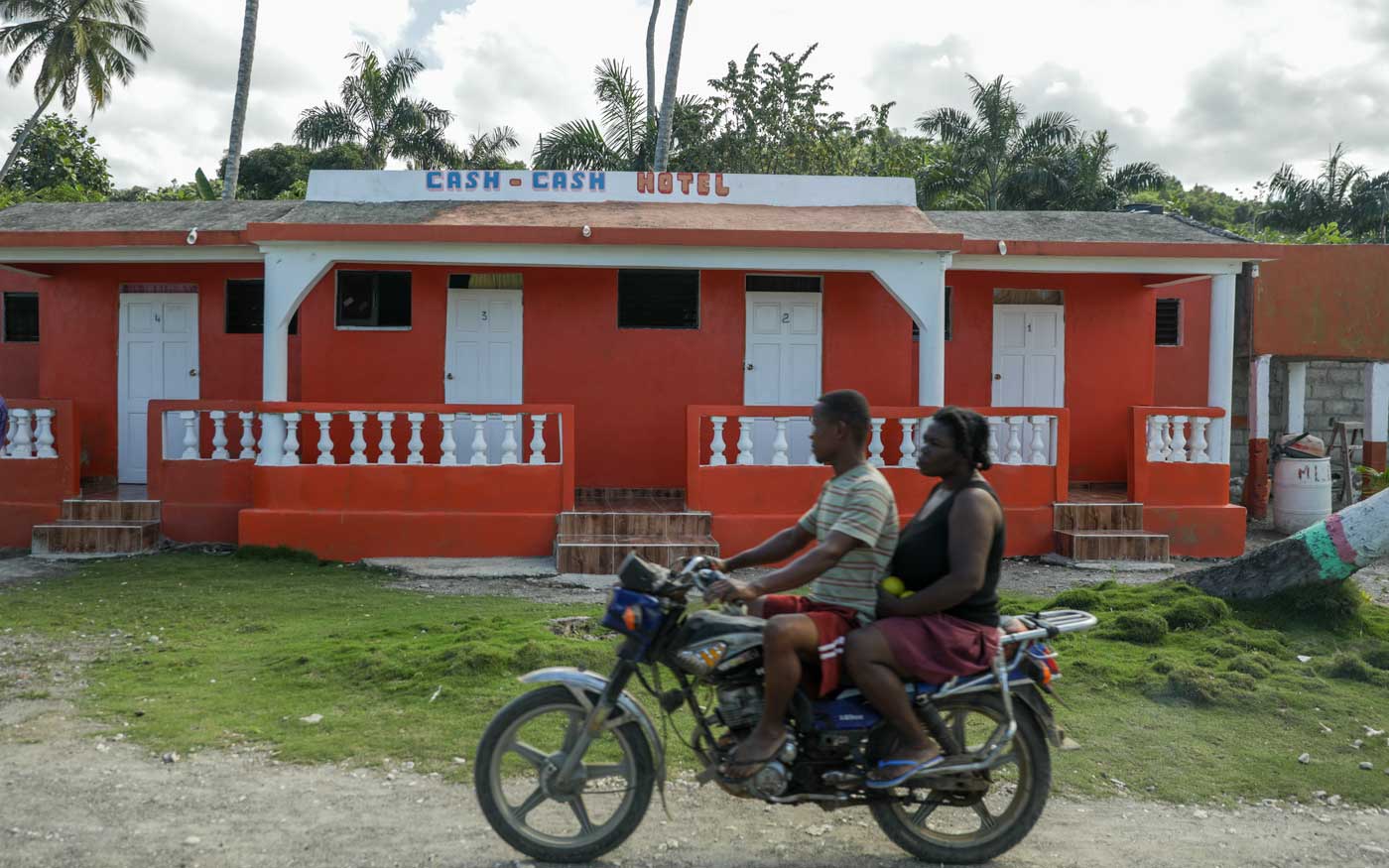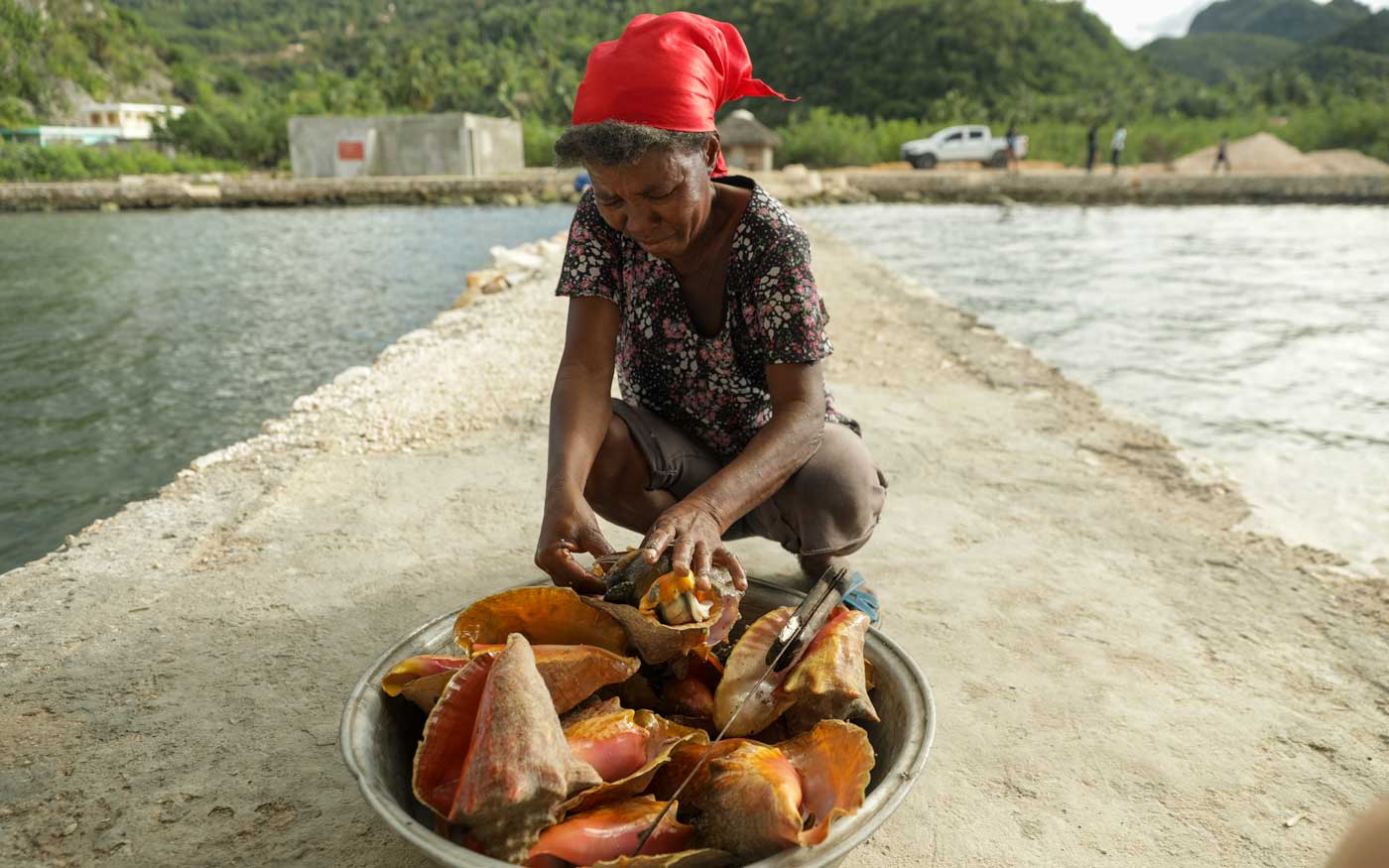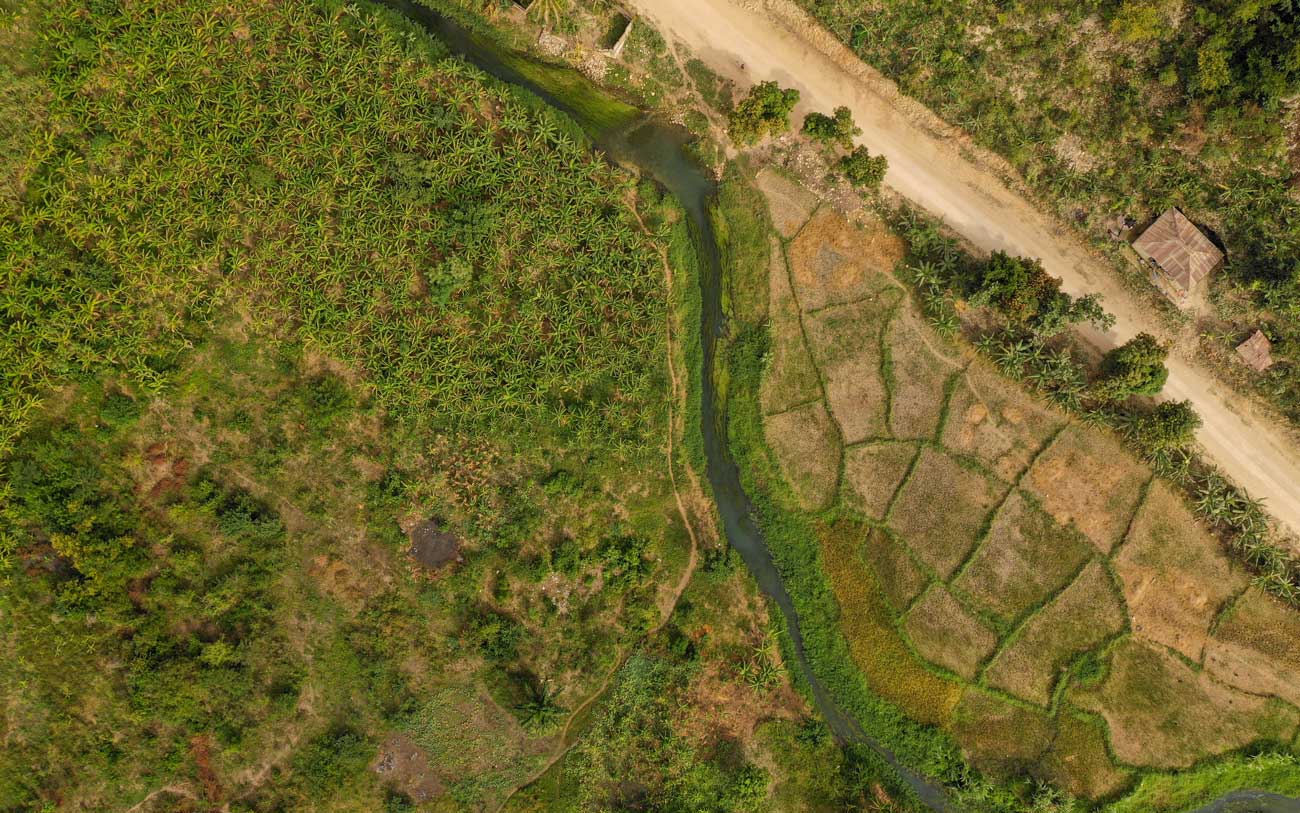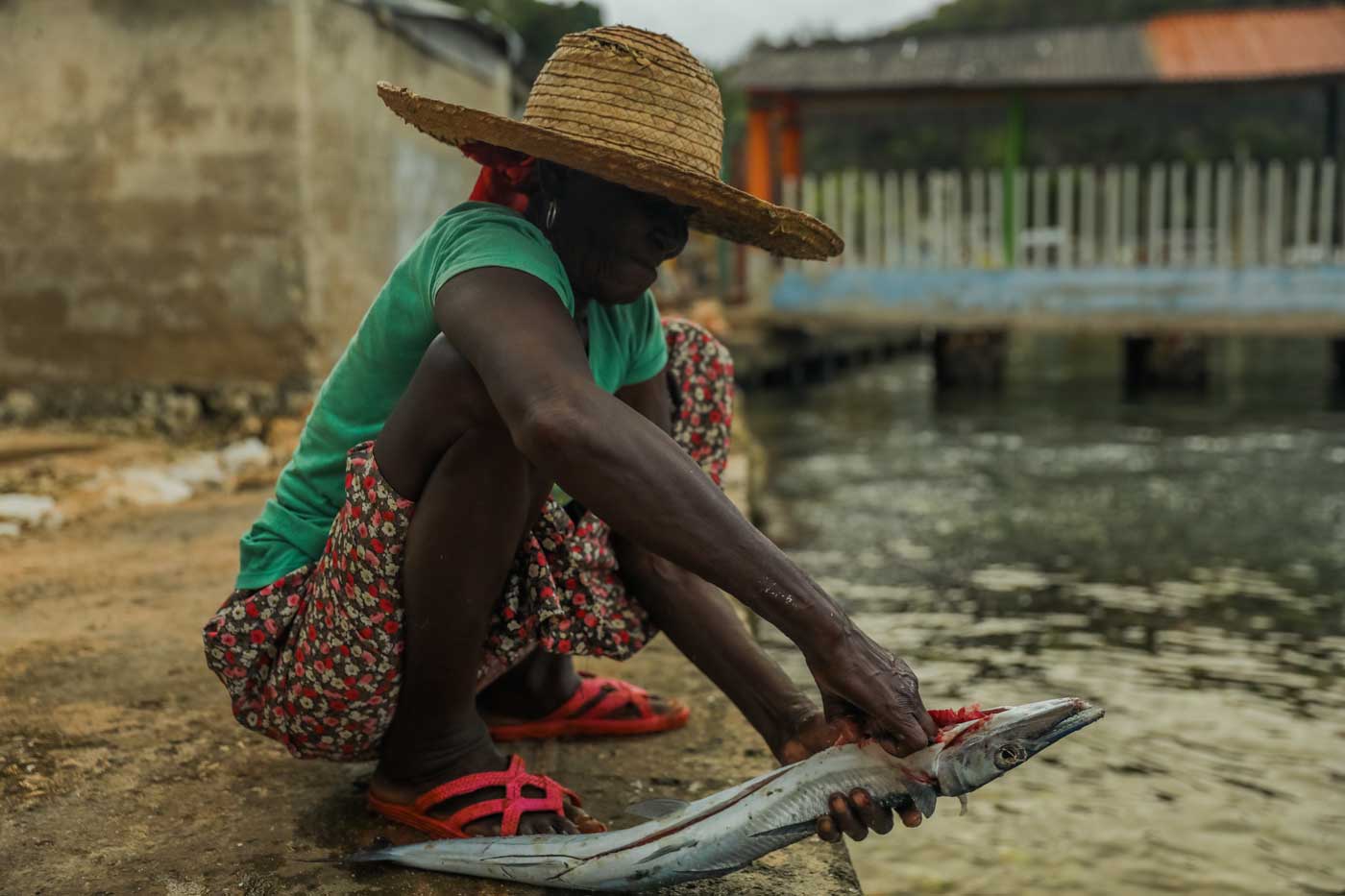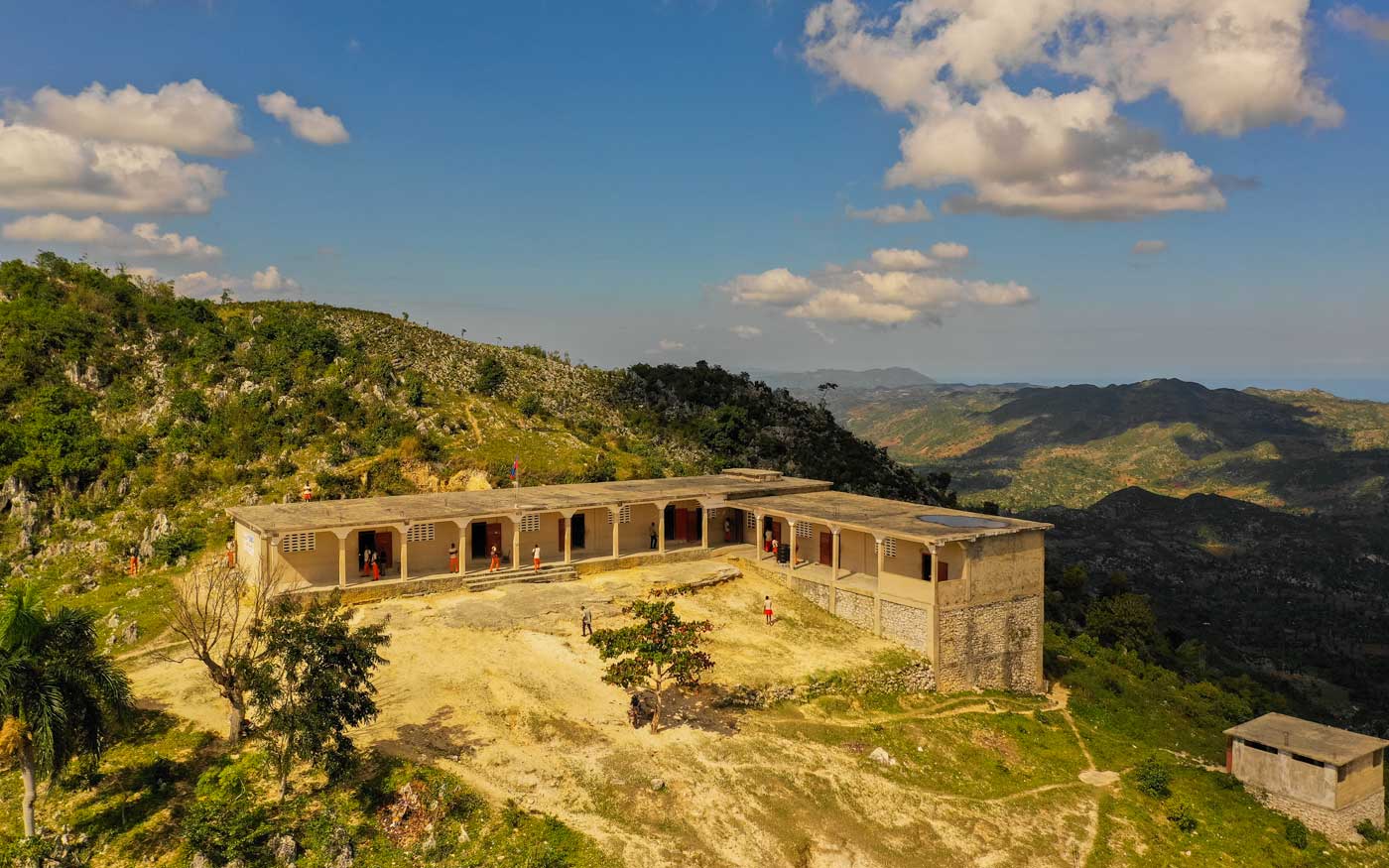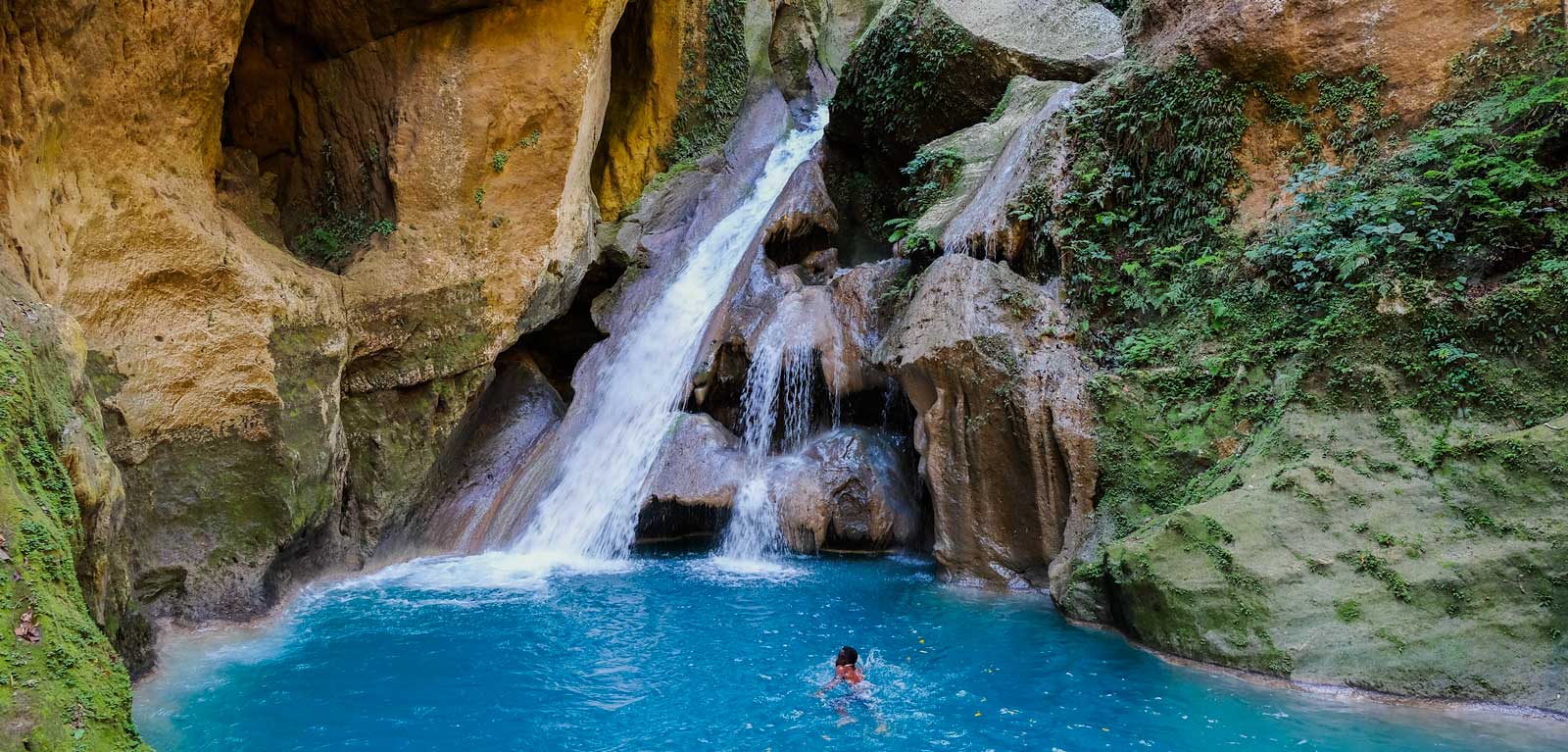
Photo: Franck Fontain
Jump into the Cobalt Waters of Bassin Bleu
No visit to Jacmel, in Haiti’s south-east, is complete without a trip to the natural wonder of Bassin Bleu.
Guarded by towering rock formations and hidden within lush, emerald-green jungle, Bassin Bleu is a natural oasis just outside Jacmel. Its four dazzling cobalt-blue pools—each with its own unique character—are linked by cascading waterfalls, offering an adventure that combines hiking, swimming, and the sheer joy of discovering one of Haiti’s most breathtaking landscapes.
With four basins of pristine natural beauty to choose from – Cheval, Yes, Palmiste and Clair – you can take your pick, but the star of the show (in our humble opinion) is undoubtedly Bassin Clair.
Watch this video to get a glimpse of Bassin Bleu before your visit:
Explore Four Bassins
Hiking through the dense, humid greenery of the surrounding jungle to find the falls, you can expect to break a sweat, but as the rush of the waterfalls grows louder, the forest clears, and the marvellous turquoise of Cheval basin comes into focus, you’ll be glad you made the effort.
Cheval is the first basin on the trail, and although striking in colour, the water is quite safe to wade into. Cheval doesn’t make it into many travel guides, but it’s shallow depth makes it suitable for everyone, including children (under supervision of course). If you’re planning on seeing the rest of Bassin Bleu, take the time to pause at Cheval: sit back, relax, and enjoy the impressive view of the southeastern coastline while you soak your feet in the bright-blue water.
For intrepid explorers who want to continue, a short walk will bring you to the 15 ft deep Bassin Yes. Beyond Bassin Yes, you’ll be rewarded with the perfect stop for a drink and bite to eat (and another swim of course), in the form of Bassin Palmiste, an impressive 57 ft deep. A series of uniquely-crafted concrete tables and seating areas, designed to meld into and complement their natural surroundings, provide convenient places to enjoy the view in comfort.
To see firsthand the impressive Bassin Clair, you’ll need extra effort, a rope, and the help of an experienced guide. Not far past Bassin Palmiste you’ll find a narrow staircase set into the natural rock formations, which will lead you up to the top of a rock hunkered into the side of the mountain. The short descent – just 10 feet – down the other side will feel much further, and is best done under the watchful eye of a guide, assisted by the aforementioned rope. Welcome to Bassin Clair.
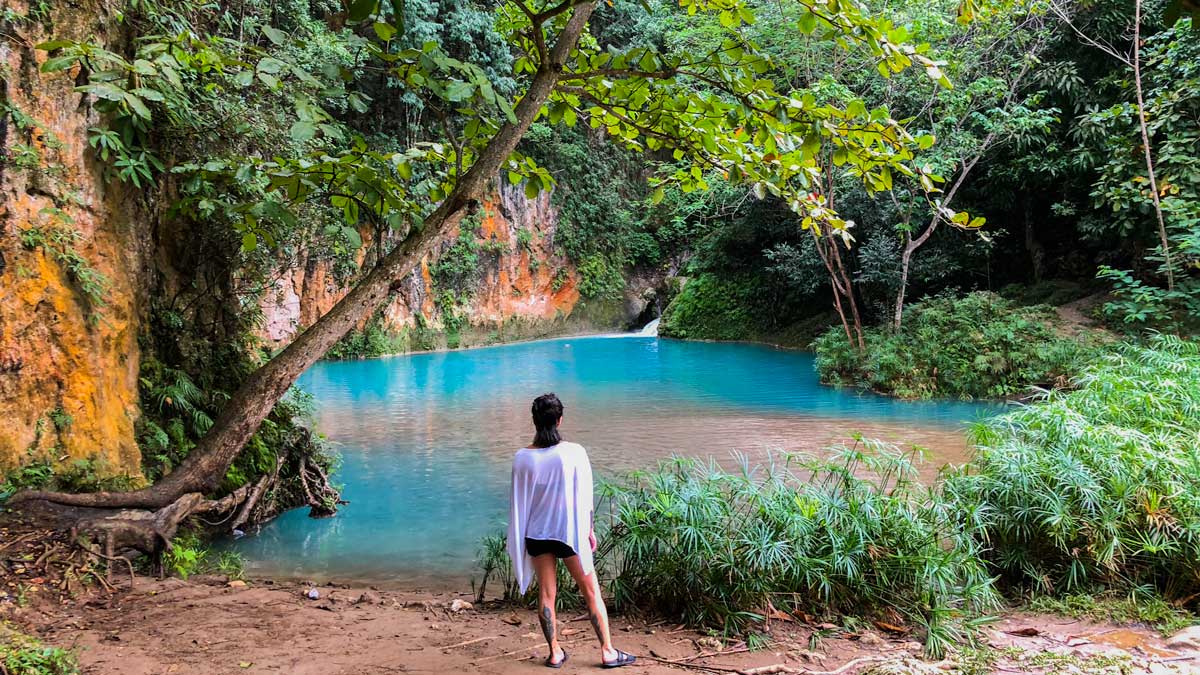
Photo: Anton Lau
Dive in
Beneath the inviting turquoise surface, there’s much more to this pool than meets the eye. At 75 feet deep, Bassin Clair is an incredible location for floating meditation, and offers the deep tranquility and peace that flotation tanks can only dream of. As you drift, suspended, the stone of the mountain beneath your feet gives way, and the unusual mix of minerals in the pool buoys you up, creating the sensation that you are floating through air.
For the thrill-seekers among you, mere floating may not be enough. Join the ranks of experienced (or just adventurous) locals who climb up the rock surface to one of the jumping-off points and perform dives and backflips, taking turns breaking the serene surface of Bassin Clair. Just make sure you save some of that energy – it’s easy to forget you still need to hike back out at the end of the day.
Getting to Bassin Bleu
Option One: Join a Tour
Join a tour from either Jacmel or Les Cayes. A veteran guide will lead you through the jungle and deliver you safely to your dream destination. With transportation included (from Les Cayes and typically from Jacmel as well), this option takes the effort out of the journey, leaving you with more energy to explore Bassin Bleu itself.
Option Two: Hike from Jacmel
It’s possible to reach Bassin Bleu on foot from Jacmel, with the hike taking approximately two hours from the city center to the waterfall. Start by heading towards the Jacmel River, which you’ll need to cross before following the mountain road that winds through the hills. You’ll want to pack plenty of water for your trek through dense vegetation and up the mountain trails. Following the inclines of the path, you’ll see plenty of stunning landscapes and get a commanding view of the southeastern coastline—the reward of a cool swim at the end will make it all worthwhile.
Option Three: Moto or Private Car
If hiking isn’t your style, you can hire a moto or a private taxi to take you closer to the entrance. While a car can get you most of the way, expect to walk the final stretch through the forest.
Entrance Fees & Guide Costs
Entrance fees
Admission is 250 HTG per person and an additional 250 HTG per car in parking fees.
A note on guides:
Getting to Bassin Bleu can be tough but rewarding and we recommend hiring a local guide.
When it comes to finding a guide, don’t worry – they’ll find you! In fact, if you don’t pick a guide and insist that the other hopeful candidates leave you alone, you can end up in the awkward situation of having several guides accompany you, all expecting to be paid at the end. Choose one (or more) guide, and insist that the rest leave you to it.
Make sure you negotiate a price with your guide before you start – 500 to 1000 HTG is a reasonable price. Bring the right bills with you.
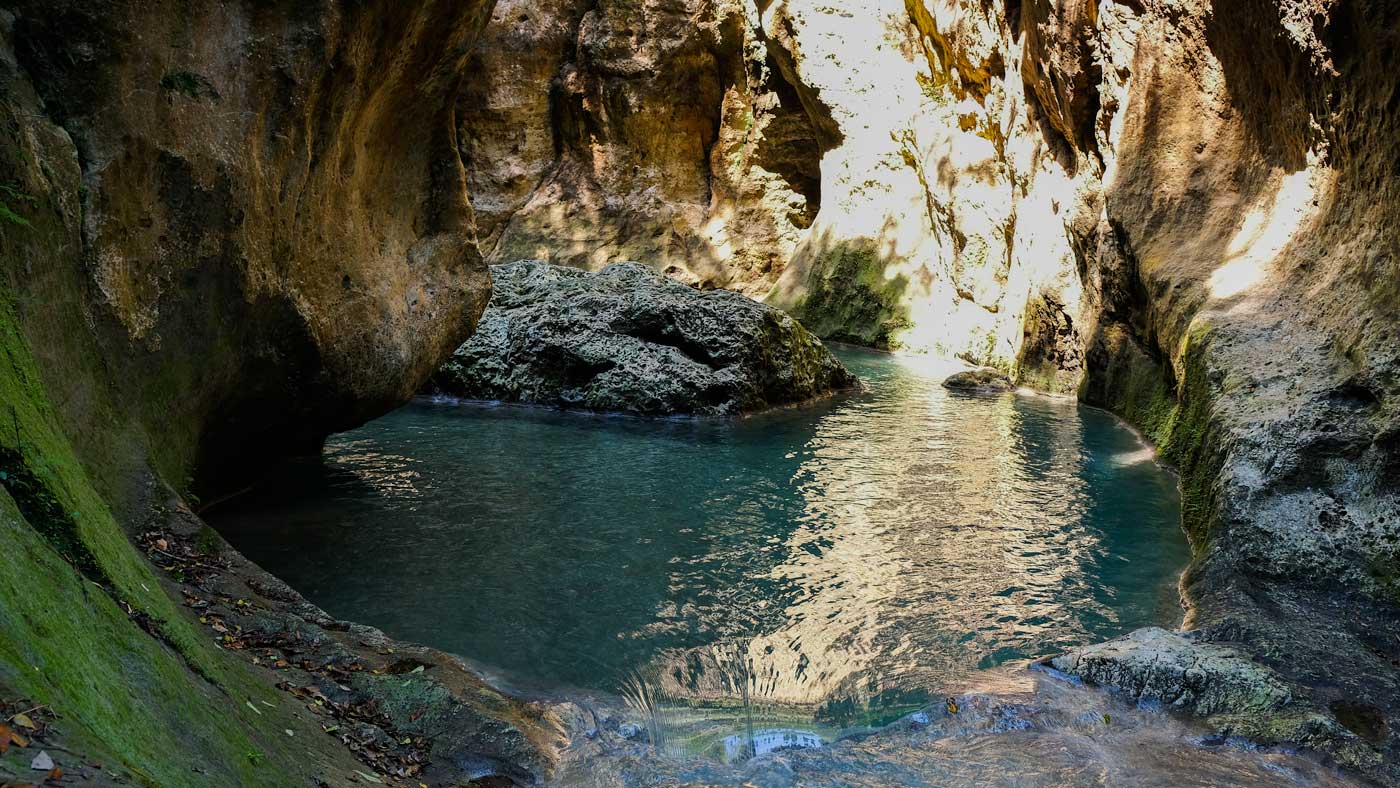
Photo: Anton Lau
The Best Time to Visit
For the most vibrant blue waters, visit on days when it hasn’t rained recently. After rainfall, the pools can turn cloudy due to sediment runoff, slightly dulling their famous cobalt hue.
Safety Reminders & Travel Tips
- Water currents: Be mindful of changing currents, especially after heavy rains.
- Follow your guide’s advice: They know the safest routes and best swimming spots.
- Bag carriers: Young locals often assist visitors by carrying bags and cameras through the water to the big rock overlooking Bassin Clair—consider tipping them for their help.
What to Bring:
Water shoes – The rocks can be slippery.
Waterproof phone case – Protect your gear from splashes.
Drinking water – The jungle heat and hike will leave you thirsty.
Small cash bills – For entrance fees, guides, and tips.
Remember, never underestimate the power of the water or the risks associated. If you are not joining a tour, inform your hotel or accommodation owner where you are going and be sure to check the conditions before you trek in.
Looking for more adventures in Haiti? Check out our guide to the best waterfalls in Haiti.
Written by Kelly Paulemon.
Published July 2018.
Updated February 2025.
Find Bassin Bleu
External Links
Find out more about Bassin Bleu

Read reviews from other travelers

Looking for some cool things to do?

Paradise for your inbox
Your monthly ticket to Haiti awaits! Get first-hand travel tips, the latest news, and inspiring stories delivered straight to your inbox—no spam, just paradise.





